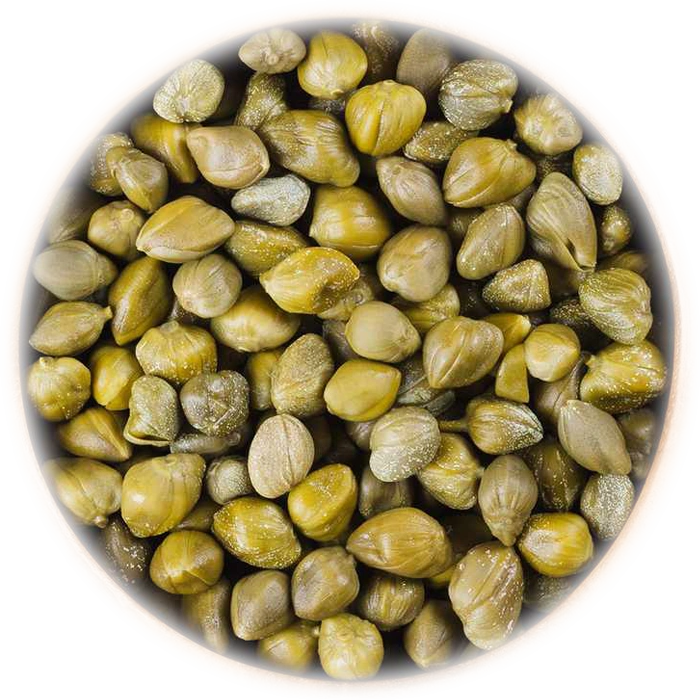Nutritional properties of capers
Energy :
None Kcal / 100g
Category : Spices & Sauces
Group : Basic Spices & Condiments
Composition And Nutritional Value :Capers (Capparis spinosa) are the flower buds of a shrub native to the Mediterranean and parts of Asia. They are often pickled or brined and used as a tangy garnish or ingredient in various dishes. Nutritionally, capers are low in calories but packed with beneficial compounds. They contain small amounts of vitamins like vitamin K, vitamin A, and vitamin C. Capers are also a good source of minerals such as iron, calcium, magnesium, and potassium. While they are not typically consumed in large quantities, they provide antioxidants, particularly flavonoids like quercetin, which have anti-inflammatory and protective properties.
Health Benefits :
Antioxidant Protection: Capers are rich in antioxidants like quercetin, rutin, and luteolin, which help neutralize free radicals in the body, reducing oxidative stress and lowering the risk of chronic diseases such as heart disease, cancer, and diabetes.
Anti-inflammatory Effects: The flavonoids in capers also possess anti-inflammatory properties, which can help reduce inflammation in the body. This makes capers beneficial for conditions like arthritis and other inflammatory disorders.
Digestive Health: Capers contain fiber, which aids in digestion and helps regulate bowel movements. They also support gut health by promoting healthy bacteria in the digestive system.
Liver Health: Some studies suggest that capers may help protect the liver due to their high antioxidant content, potentially reducing the risk of liver damage from toxins.
Blood Sugar Control: Capers may help regulate blood sugar levels by improving insulin sensitivity, making them a useful addition to the diet for people with type 2 diabetes.
Culinary Uses : Capers are commonly used in Mediterranean, Italian, and Middle Eastern cuisine. Their sharp, tangy flavor enhances a wide variety of dishes, including salads, sauces, meats, pasta, and fish. One of the most popular uses for capers is in chicken piccata, where they are combined with lemon, butter, and white wine sauce. They are also frequently used in tapenade (an olive paste spread), pasta puttanesca, and as a garnish for smoked salmon or bagels. Capers pair well with bold, savory dishes, adding a burst of flavor and a slight salty kick.

